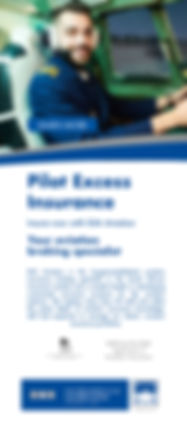Birds and aircraft have collided with serious consequences to both humans and animals almost from the beginning of aviation. The aviation industry throughout the world increasingly recognises that bird strikes have become a serious safety risk. Birds are attracted to airport grounds to feed or roost while they often also fly over the area from feeding or roosting sites.

Air traffic in South Africa is increasing and it is essential to ensure that international air safety standards are maintained at South African airports. Little has been done in the past to co-ordinate the management of bird related safety risks at South African airports. In order to improve the situation, the Airports Company South Africa (ACSA) has entered into a unique strategic partnership with the Endangered Wildlife Trust (EWT), a non-governmental organisation committed to the conservation of southern Africa's biodiversity, to establish and operate an integrated national bird control program. The aim of the project is to minimise bird strikes and other interactions between wildlife and airport facilities at ACSA airports by applying environmentally-sensitive management techniques.

Birds pose a real threat to aircraft, particularly in the area of the airport and in the neighbourhood (from 75% to 95% of bird collisions with civil aircraft occur at the airport or close to it). Especially hazardous are big and heavy species, such as gulls,vultures and geese, and also small gregarious birds, such as starlings and swallows. Over the last decades, the number and frequency of bird-aircraft collisions increased significantly. Several factors are responsible for this fact, and the most important is an increase in the number of flight operations combined with increasing numbers of some hazardous bird species.

Birds are attracted to airports because they view the vast airport area as a safe place for resting, gathering in flocks, or hiding from predators. Besides safety, birds can find food and water for drinking and bathing at the airport. The occurrence of birds at the airport also depends on the attractiveness of the neighbouring habitats. Methods applied to minimize the risk of bird-strikes comprise various long-term and short-term solutions. The application of the former should be considered already at the stage of airport planning and constructing (i.e. the airport can be constructed far from important bird areas and flyways). The most effective are methods reducing the carrying capacity of the environment at the airport. Their essence is to modify the ecological character of the airport (eliminating sources of water, food resources and shelters) so that it ceases to be an attractive place to birds. Very effective are structural solutions and barriers that deter birds in a passive way by reducing the attractiveness of the airport infrastructure to birds. The effect of the use of these methods is a long-term reduction of the number of birds at the airport and, consequently, reduction of the risk of bird strikes.

These methods certainly do not eliminate all birds from the zone of airport operations, and should be supplemented with a range of dispersal methods. These methods should involve a mobile patrol equipped with acoustic (shell crackers, propane cannons), visual (flares), and physical (trained birds of prey) scaring devices. No one technique is 100% effective, hence many techniques should be used in combination. Scaring techniques should be used selectively and in rotation in order to avoid habituation. Selection of bird-control methods depends on the intensity and character of the problems with birds. Hence it is very important for airport personnel to monitor the occurrence and movements of birds at the airport and in the vicinity of it, and to record all collisions of birds with aircraft, their severity and bird species involved. An analysis of the variation in the risk of collision with reference to the time of the day and year, and the phase and height of flight makes it possible to adapt the programme for bird management to variable environmental conditions.
Source www.researchgate.net
























